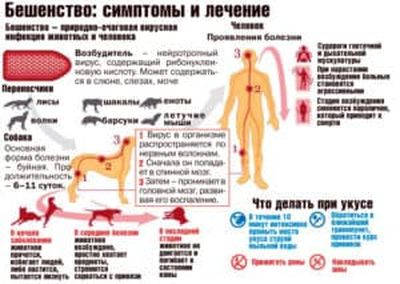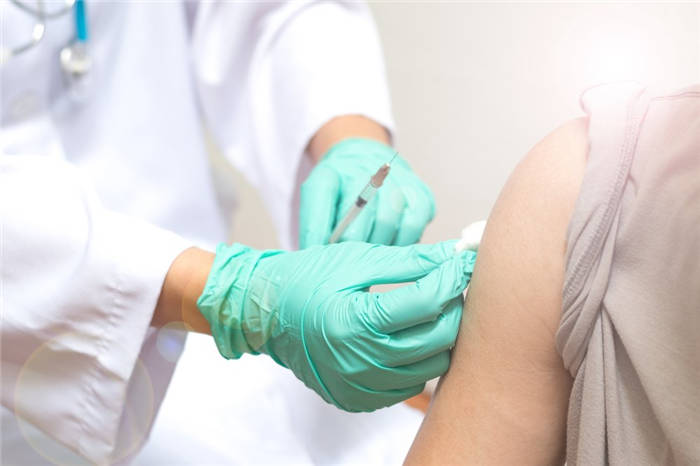Now some tips on how to minimize the risk of cat scratches and bites.

- Deadly cats: hold the wound high
- Features and consequences of a cat bite
- First aid and treatment
- Bitten wounds
- Pathogenesis of cat scratch disease
- Feline diseases: prevention and treatment
- Read more
- Dementia, Alzheimer's or Parkinson's: what do they have in common and how do you care for your family and friends?
- Causes of toxoplasmosis
- Manifestations of toxoplasmosis
- Prevention of cat bites and scratches
- Read more
- Dementia, Alzheimer's or Parkinson's disease: what do they have in common and how can you provide the care your family and friends deserve?
- Tetanus immunity: tension control
- To whom and how is emergency prophylaxis administered?
Deadly cats: hold the wound high
It's no surprise: they're the ones who tend to be sentimental about their furry pets, taking pride in them, pampering them, and grooming them. In the process of care (eg, washing) of the mistresses and most often injured.
The word "injury" is too serious to refer to a small wound left by a bite or a scratch. A dog is capable of much more damage than a cat, which has neither a strong muscular body nor a powerful jaw. At the same time, cat bites are much more likely than dog bites to be infected.
The infection is usually polymicrobial, containing Streptococcus, Staphylococcus, Pasturella bacteria, typical even for domestic quite clean and well-groomed cats and kittens. And a bacteria like Bartonella can lead to felinosis (cat scratch fever).
But about that a little later. First, let's find out what action to take if a cat bites or scratches.
First of all, it is important to know what the offender is. Is it a domestic cat? If it is your pet, or he lives with close friends and spends most of the time at home, then you probably do not need to go to the doctor, especially if the cat is vaccinated and in general, do not complain about health.
If you are bitten or scratched by a stray cat, however, be sure to go to the hospital. In this case, you may need preventative measures for bacterial infections, tetanus and rabies. 80% of stray cat bites are infected, so it's best not to take any chances.
Superficial scratches or pet cat bites can be treated at home, deeper and bleeding ones should be seen by a doctor. In all cases, however, you should give first aid yourself or ask a loved one to do it for you.
Before touching the wound, wash your hands with soap and warm water. Hold hands under running water for at least 20 seconds, washing each finger, between fingers and under fingernails with soap.
Rinse the wound and around it with plenty of warm running water. Avoid hot water, especially if there is bleeding, as it can make it worse.
Features and consequences of a cat bite

Rabies: symptoms and treatment
One of the biggest dangers of a bite is the possibility of rabies infection. Both bites from street animals and pets that have not been vaccinated against rabies infection are equally dangerous.
The bacteria can be transmitted with saliva into the bloodstream through skin lesions. Serious deep bites are especially dangerous. The cat itself becomes infected with rabies from an already sick animal. After a bite from a sick animal, blood infection in a cat is possible. Infection can occur through the saliva of an infected animal that comes into contact with mucous membranes (e.g. eyes) with microcracks.
Signs of rabies in humans from a cat bite are divided into three stages:
- The appearance of itching and pain, redness and swelling at the site of the injury. Body temperature rises, general malaise and weakness, headaches and nausea develop. Difficulty in breathing and shortness of breath occur. Increased sensitivity of vision and hearing, poor sleep accompanied by nightmares may occur.
- A few days after the appearance of the first signs, a period of agitation develops. It is characterized by periodic painful convulsions, which may be provoked by any irritants (light, noise, wind gusts), hallucinations. Infected persons may become aggressive, breaking furniture and tearing off clothing. Body temperature rises to critical levels, profuse saliva secretion begins, similar to foaming from the mouth. Brainstem dysfunction develops (convulsions of the swallowing muscles).
- Not all patients survive to the last stage, in which limb paralysis, cranial nerve damage (facial paralysis, optic nerve dysfunction) occur. After a severe attack, the paralysis subsides, the patient can even eat a little and feels better. After 12-20 hours, paralysis of the respiratory center or cardiac arrest develops and death occurs. Death from rabies is characterized by absence of agony and suddenness.
First aid and treatment
If bitten by a cat, you can treat the wound yourself. Then you need to go to the hospital, where doctors will provide the necessary assistance:
- Wash the skin wound for 15 minutes with soap (preferably laundry soap) and water (to remove saliva that has entered the wound, which may contain dangerous bacteria).
- Treat the wound with hydrogen peroxide, alcohol or vodka.
- Stop the bleeding by applying a pressure dressing (if the bleeding stops within 15 minutes of the bite, a dressing is not necessary).
- Dab the skin around the wound with iodine, green or rubbing alcohol.
- Treat the wound with an antibacterial agent: cream or ointment.
- Apply a sterile dressing.
It is necessary to go to the hospital after a bite under the following circumstances:
- If bitten by an unfamiliar or street animal;
- A wound from an animal that has not been given rabies shots;
- the cat is foaming at the mouth;
- an attack on a person for no apparent reason;
- duration of bleeding after injury – more than 10 minutes;
- severe swelling of the injured area;
- severe pain accompanied by festering of the wound;
- increase in body temperature;
- anaphylactic shock.
When going to the doctor, the victim will be vaccinated against rabies. After that, antibiotic therapy is carried out.
Patients who cannot take antibiotics use local remedies (ointments) that have a similar effect.
Bitten wounds
This material is intended solely for physicians and specialists with advanced medical training. The articles are for informational and educational purposes. Self-treatment and self-diagnosis is extremely dangerous to health. The author of the articles does not give medical advice: a clinical pharmacologist is a doctor only and exclusively for doctors.
- Pasteurella multocida (dogs and cats)
- Capnocytophaga canimorsus (dogs)
- Eikenella corrodens (people)
- Streptococcusspp. (all bites), especially S.anginosus
- Staphylococcus aureus (all bites)
- Staphylococcus intermedius (dogs)
- Anaerobes (all bites), especially Prevotellaspp.
- These recommendations include human, cat, dog, and bat bites and do not include insect bites
- Infections due to bites can lead to cellulitis, abscesses, purulent tendovaginitis, septic arthritis, and osteomyelitis (especially penetrating injuries)
- Data on human bite wounds or closed injuries, due to beatings, may be minimal or intentionally misrepresented by the patient, so a more thorough questioning of the trauma history is necessary. It is worth keeping in mind that any injuries to the metacarpal bones should be considered infected
- Wounds less than 8 hours from the time of receipt: crushed or punctured wounds, scratches (too little time for signs of infection to develop)
- Wounds more than 8 hours old: signs of infection such as fever, cellulitis, purulent discharge, abscess
- A Gram stain and microbiological examination to detect aerobes or anaerobes (swabbing or taking tissue slices) are very important diagnostically
- Radiological examinations if osteomyelitis is suspected.
Pathogenesis of cat scratch disease
To understand how the disease occurs and progresses, consider The pathogenesis of cat scratch disease.
- A representative of the bacterial pathological flora, Bartonella henselae, one of the smallest but dangerous, enters us through lesions on the skin, caused in 9 out of 10 cases by bites or claw wounds. And not just cats, but also guinea pigs, monkeys and even dogs.
- At first the inflammation is local, but then the infection reaches the regional lymph nodes, which not only become inflamed but also turn into granulomas and even abscesses with fistulas.
- Sometimes the infection is not limited to the lymph nodes, but spreads to the internal organs, more often to the liver, where abscesses are also formed.
- Tissue decay products formed in the process cause general intoxication and allergy.
- As a rule, no treatment is required, the disease cures itself. But in severe cases, such as HIV-infected people, the help of a doctor is necessary.
Feline diseases: prevention and treatment
There is no specific prevention. The only way not to get sick is to never come into contact with cats and other animals.
The answer is positive. About 5% of people in Russia have immunity to cat scratch disease. And a quarter of them are owners of domestic cats, who often did not even feel any symptoms, nevertheless suffered from the disease in a mild form.
Read more

Dementia, Alzheimer's or Parkinson's: what do they have in common and how do you care for your family and friends?
Basic rules of care for dementia, Alzheimer's and Parkinson's disease. What are the benefits of geriatric centers?
Causes of toxoplasmosis
Human toxoplasmosis infection occurs from pets, most commonly cats. This infection is especially dangerous for pregnant women, so it is better for them not to come into contact with cats.
Infection can also occur when eating meat products, eggs from infected animals that have not undergone sufficient heat treatment. Toxoplasma can get directly into the human blood through damaged skin or be transmitted by blood-sucking insects. Finally, there are also cases of intrauterine infection.
Factors that can contribute to the appearance of the parasite in the body and increase the risk of toxoplasmosis:
Touching the mouth with dirty hands after contact with the ground, after cleaning the cat litter box, or any other contact with cat feces.
Eating raw or undercooked meat, especially pork, lamb, or venison.
Touching the mouth after contact with raw or uncooked/uncooked meat.
If a woman is pregnant and has contracted toxoplasmosis, the infection can be passed from her to her baby, which can lead to serious consequences.
Manifestations of toxoplasmosis
The possibility of intrauterine infection of the fetus is particularly dangerous. Toxoplasma is able to penetrate the placenta and cause disease in the unborn child. But this is only possible if the mother is infected with toxoplasmosis during pregnancy. If she is infected before pregnancy, the unborn child is not at risk.
In congenital toxoplasmosis, the damage to organs is very significant. Congenital deformities of the eyeball, up to and including blindness, and underdevelopment of the brain and spinal cord are possible. The severity of damage to the fetus is closely related to the gestational age – the younger the fetus, the more severe the disease.
As a result of congenital toxoplasmosis, the fetus either dies as a result of deformities incompatible with life, or is born with symptoms of acute congenital toxoplasmosis – intoxication, fever, jaundice, lesions of the liver, spleen, lymph nodes and central nervous system (encephalomyelitis).
But toxoplasmosis can affect the fetus only once, all subsequent pregnancies will be reliably protected by the antibodies formed in the mother.
Acquired toxoplasmosis often occurs in a latent (hidden) form; the acute form can resemble typhoid or encephalitis, often affecting the eyes. The acute stage lasts about 7 days. Acute toxoplasmosis begins with fever, headache, cramps, vomiting. The liver and spleen enlarge, and pneumonia and paralysis may set in.
The most common is the chronic form of the disease, with a prolonged fever of 37.2-37.8 degrees, headaches, increased liver, spleen, lymph nodes; muscle and joint pains. Carrier infection is also possible.
Chronic form and carrier often turns into an acute form against the background of stress, pregnancy, immunity decrease of different nature. The manifestation of toxoplasmosis is considerably affected by the general state of health, immune status. In people with immunodeficiency (including AIDS) the disease is extremely severe, often with fatal outcome.
Prevention of cat bites and scratches

- You should not touch stray cats, their reactions can be unpredictable.
- Not all cats like to be stroked or touched, it is wise to ask the owner how the pet reacts to petting from strangers.
- Raising a kitten it is necessary to suppress all aggressive behavior: it can be very cute when such a baby bites, but the kitten will grow up, and the bad habit of biting will remain.
- A cat that often bites is better to give a toy than to expose your hands to its teeth.
- Your pet should be taken to the veterinarian regularly – if the cat is in pain it may react inappropriately if you touch the sore spot or take it in your arms.
- You should take your pet's temperament into account – for example, if the cat does not like to sit in your arms, you should not try to force it to do so.
- You should teach children that the cat is a living creature and that you should not hurt it, in particular by pulling its hair or tail.
- You should not touch a cat with kittens – if she feels that something is threatening her offspring, her behavior could be unpredictable.
- The risk of a bite infection increases with immunodeficiency conditions, diabetes, and pregnancy.
- First aid should be given as described above to avoid complications from a cat bite.
Read more

Dementia, Alzheimer's or Parkinson's disease: what do they have in common and how can you provide the care your family and friends deserve?
Basic rules of care for dementia, Alzheimer's and Parkinson's disease. What are the benefits of geriatric centers?
Tetanus immunity: tension control
If an adult has no vaccination records (can't remember if they were given or no record in the chart), tetanus immunity can be assessed at the time of an injury call. The level of specific anatoxin in the blood plasma is determined by a rapid assay. Its result is quick, and less than 1 ml of blood (from the wound itself, from a finger when other tests are taken, from a vein) is sufficient for the study. Tetanus is dangerous if the volume of anatoxin in the plasma is less than 1 IU/ml. If an investigation is not possible and there is no data on whether a vaccination has been given, the patient is considered unvaccinated, at risk for tetanus, and a full range of prophylactic measures is necessary.
The following types of drugs are used for emergency prophylaxis of tetanus infection in wound care:
- Tetanus anatoxin, adsorbed (abbreviated AS).
- Adsorbed diphtheria-tetanus toxoid (ADS-m), a prefix indicating a reduced concentration of antigens.
- Tetanus antitetanus serum (TAS), based on horse hyperimmune plasma, carefully purified and concentrated. One dose of serum contains 3000 IU of the active ingredient.
- Anti-Tetanus Human Immunoglobulin (HHA). One dose contains 250 IU of the active ingredients.
Of all these compounds, serum is one of the most reactogenic and dangerous. It can give severe allergic reactions, up to and including shock, upon injection. For this reason, a mandatory skin test is indicated before the serum is administered.
To whom and how is emergency prophylaxis administered?

Indications for emergency prophylaxis of tetanus infection are injuries with compromised tissue integrity, infected wounds, frostbite and burns above 2nd degree, penetrating injuries of the digestive tube, childbirth and abortions outside hospitals, animal bites (both wild and domestic). Necrosis or gangrene of tissue, long-term carbuncles, or abscesses are also indications for prophylaxis.
Prophylaxis of infection is primary surgical treatment of the wound with simultaneous administration of immunopreparations. Injections are given as early as possible from the time of injury, starting on day 1 and up to day 20. This is due to the length of the incubation period. Depending on the patient's vaccination record, the type of drug and immunization options are decided upon.
- If no more than 5 years have passed since the last vaccination, no preparations are administered.
- If there is an infected wound and more than 5 years have passed since the last vaccination, 0.5 ml of AC (antitetanus toxoid) is administered.
- If earlier immunization, even as a child, was incomplete, there were only two vaccinations, adults are immunized with 1 ml of anatoxin and an injection of 250 IU of immunoglobulin. If immunoglobulin is not available, the use of serum is indicated. Because of its high reactogenicity, a preliminary skin test is carried out before use. If the test result is positive and redness of more than 1 cm in diameter has developed in the area where the serum was applied, the serum must not be injected and replacement with immunoglobulin in another medical institution is indicated.
To avoid unnecessary injections and the administration of quite reactive and dangerous preparations (immunoglobulin or serum), it is worth taking care of timely vaccination. It is free of charge at health clinics and protects children and adults from contracting tetanus.






